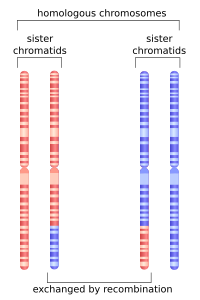
Photo from wikipedia
Clinical trials are studying the benefits of combining the PARP-1 inhibitor olaparib with chemotherapy and radiotherapy treatment in a variety of cancer increasing the therapeutic ratio for olaparib may come… Click to show full abstract
Clinical trials are studying the benefits of combining the PARP-1 inhibitor olaparib with chemotherapy and radiotherapy treatment in a variety of cancer increasing the therapeutic ratio for olaparib may come from its ability to modify the tumour microenvironment by targeting homologous recombination-deficient, hypoxic tumour clonogens, and/or increasing tumour-associated vasodilation to improve oxygenation. Herein, we investigated the effect of prolonged neoadjuvant exposure to olaparib on the tumor microenvironment using a genetically-engineered mouse p53−/− syngeneic breast cancer model, which is proficient in homology-directed DNA repair. We observed increased in vivo growth delay and decreased ex vivo clonogenic survival following pre-treatment with olaparib 50 mg/kg bid Olaparib for 7 days ending 48 hours prior to a radiation dose of 12Gy. This increased in vivo radioresponse was associated with a decreased hypoxic fraction. This study suggests that the radiation response in patients can be improved with limited toxicity if olaparib is given in a purely neoadjuvant setting to modify the tumor microenviroment prior to the start of the radiotherapy treatment. Consequently a significant gain can be achieved in therapeutic window and clinical studies are needed to confirm this preclinical data.
Journal Title: Oncotarget
Year Published: 2017
Link to full text (if available)
Share on Social Media: Sign Up to like & get
recommendations!